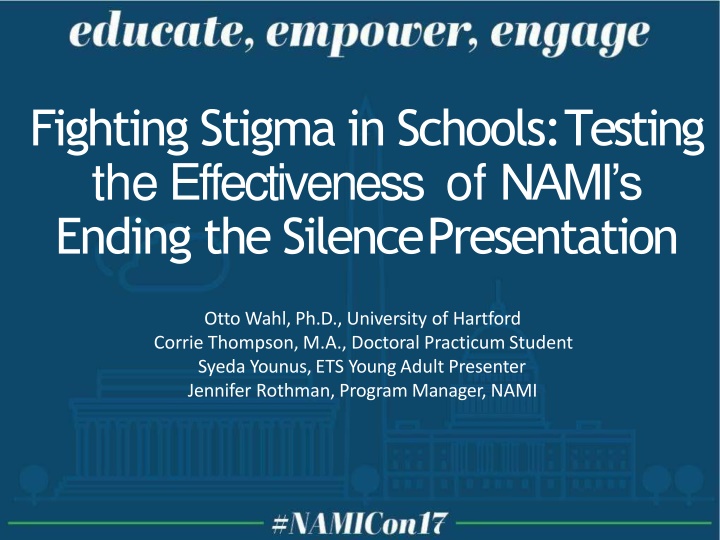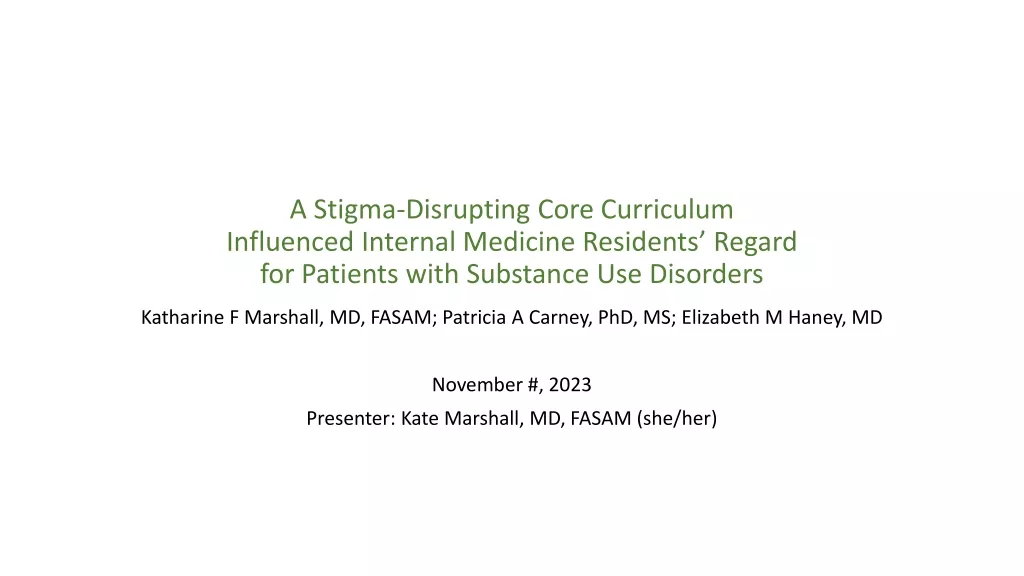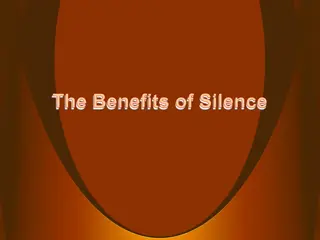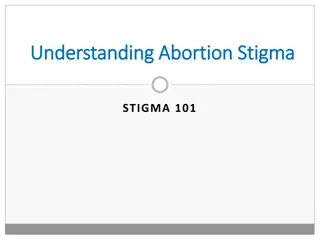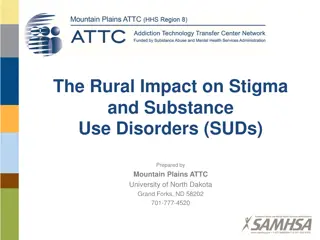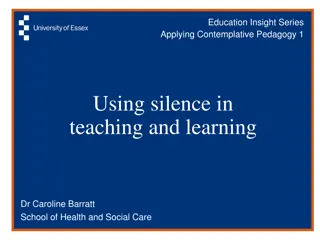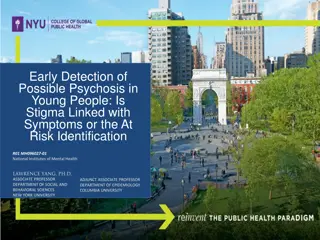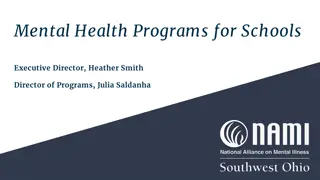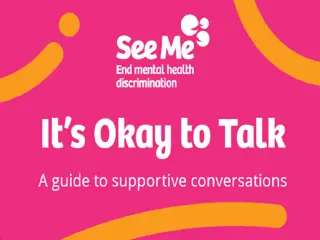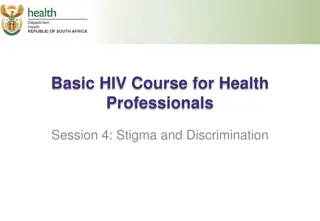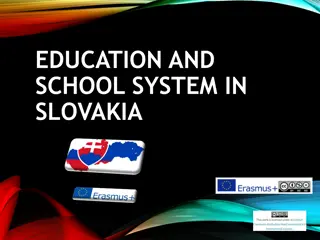Fighting Stigma in Schools: NAMI's Ending the Silence Program Overview
Testing the effectiveness of NAMI's Ending the Silence presentation in combating mental health stigma in schools. Developed in 2007, the program aims to educate students, reach out to communities, and provide support. With widespread implementation since 2014, it focuses on raising awareness, recognizing warning signs, and reducing stigma around mental health.
Download Presentation

Please find below an Image/Link to download the presentation.
The content on the website is provided AS IS for your information and personal use only. It may not be sold, licensed, or shared on other websites without obtaining consent from the author.If you encounter any issues during the download, it is possible that the publisher has removed the file from their server.
You are allowed to download the files provided on this website for personal or commercial use, subject to the condition that they are used lawfully. All files are the property of their respective owners.
The content on the website is provided AS IS for your information and personal use only. It may not be sold, licensed, or shared on other websites without obtaining consent from the author.
E N D
Presentation Transcript
Fighting Stigma in Schools: Testing the Effectiveness of NAMI s Ending the Silence Presentation Otto Wahl, Ph.D., University of Hartford Corrie Thompson, M.A., Doctoral PracticumStudent Syeda Younus, ETS Young Adult Presenter Jennifer Rothman, Program Manager,NAMI
Ending the Silence(ETS) History Developed by David & Brenda Hilligoss with NAMI DuPage, Illinois in 2007 Was available in affiliates in 6 different states and statewide in California Had reached 60,000 students by mid-2013 Gifted to NAMI in late 2013, launched in 2014
Since2014 Launched in 27 states 74 affiliates reporting presentations 190 affiliates designated in NAMI 360 5 National Trainers 52 State Trainers 300+ presenters trained 4,500+ presentations given Reached over 200,000 students
ETSGoals Recognize the warning signs for themselves and their friends and how to get help Raise awareness and change perceptions around mental health conditions Develop a community of support Provide practical, current information about mental health challenges Diminish the stigma around mental health conditions so teens feel comfortable talking about how they feel in order to get the help they need
PresentationFormat 50 minutes Two segments, each with a different presenter: Slideshow presentation by Lead Presenter (individual or family member): 25 min Personal story by Young Adult Speaker with lived experience of mental illness: 10min Remainder of time (10-15 minutes) for Q & A and Evaluation
Where isETS? Generally at high schools & middle schools Schools incorporate it as part of their mental health education programs Assemblies or class presentations Occasionally, community events such as youth groups, or after hours at schools Student-led symposium at a high school in honor of Mental Health Awareness LGBTQ Youth Meeting at a church Teen Center in Fairfax Whole Child Conference mental health conference at an Arlington highschool Adolescent Intensive Outpatient Program at a hospital in Ashburn
MyExperience as a Presenter Both Lead Presenter and Young Adult Presenter Student engagement and sharing of their personal stories Questions about helpingfamily members or friend Refer to schoolcounselor Very rewarding and positive experience for me!
ResearchDesign Data collected from schools from 5 areas of the country 2 High Schools from each area participated 6 classes at each school participated 3 classes viewed the presentation (ETS) 3 classes did not view the presentation(Control)
Research Design(contd) Demographic questionnaire Gender, age, ethnicity 12 itemquestionnaire Intended to assess knowledge and attitudes about mental health Completed before, immediately after, and 4-6 weeks after presentation Fidelity assessment Checklist of important elements of the presentation Completed by a non-presenter
Characteristics ofStudent Participants 530 ETS 402 Control
Questionnaire andScores 12 items/statements Rated on a 5-point scale from Strongly Disagree to StronglyAgree Items scored from 1-5 so that HIGHER SCORES INDICATE BETTER KNOWLEDGE AND MOREPOSITIVE ATTITUDES For seven items, Strongly Disagree = 1, Disagree = 2, etc. For five items, Strongly Disagree = 5, Disagree = 4, etc. Overall (total) scores ranged from 12 to 60.
CompanionFindings Similar pattern for each of the 10 study schools Similar pattern for males and females Similar pattern for Caucasians, African-Americans, and Hispanics
Items Changing Mostfrom Pre to Post for ETSStudents
Items Changing Moderatelyfrom Pre to Post for ETSStudents
Items Changing Moderatelyfrom Pre to Post for ETSStudents
Items Changing Leastfrom Preto Post for ETSStudents
Conclusions ETS has an impact. It improves knowledge and attitudes toward mental health conditions and toward treatment-seeking for high school students. The effect is robust. It occurs across regions, across schools, and across presenters. It occurs across gender and across race/ethnicity. The effect is lasting. Improvement is not just immediate, but lasts beyond the ETS presentation.
NextSteps Secondary study on middle schools Apply for Evidence Based Practice designation With National Registry of Evidence-based Programsand Practices (NREPP) withSAMHSA Submission of results for journal publication ETS for School Staff and Families Incorporating Parents & Teachers as Allies Expansion New states New affiliates in participatingstates Presenter training online
